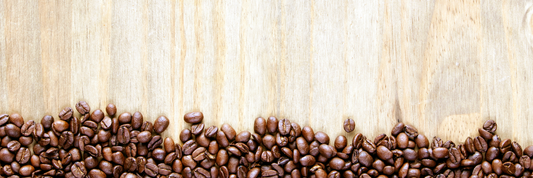Pizza is one of the most popular fast foods, but its packaging often leads to confusion about recycling. Many people wonder, "Can you recycle pizza boxes?" The answer is not always straightforward. While pizza boxes are made from recyclable cardboard, grease, cheese, and food residues can complicate the process. This article will explore how to properly recycle pizza boxes, regional guidelines, and alternative disposal methods to ensure a more sustainable approach to pizza box waste.
Can You Recycle Pizza Boxes?
Clean vs. Greasy Pizza Boxes
-
Clean pizza boxes: If the box is free from grease and food, it can go straight into the recycling bin.
-
Greasy pizza boxes: If parts of the box are soaked with grease, those sections should be removed before recycling the clean parts.
-
Cheese or food leftovers: Always scrape off any food residue before placing the box in the recycling bin.
Regional Recycling Guidelines
Recycling rules can vary depending on your location. Here's how some countries handle pizza box recycling:
United States
-
Many cities allow clean pizza boxes in the recycling bin.
-
Some programs accept lightly greasy boxes, while others reject them.
-
Check local waste management websites for guidelines.
Canada
-
Toronto: Greasy pizza boxes belong in the green bin (compost).
-
Vancouver: Clean pizza boxes go in the recycling bin, while greasy ones should be composted or thrown in the trash.
-
Montreal: Similar to Vancouver—clean boxes are recyclable, greasy ones should be composted.
United Kingdom
-
Clean pizza boxes can be recycled.
-
If they are greasy, they should go into general waste or compost bins.
Australia
-
Most areas allow clean and lightly greasy pizza boxes in the recycling bin.
-
Boxes with excessive grease should be composted.
Always check your local recycling program to be sure.
 How to Recycle Pizza Boxes Properly?
How to Recycle Pizza Boxes Properly?
Pizza boxes are recyclable, but be careful because pizza is a greasy food. To recycle pizza boxes, keep the following in mind:
- Remove any leftovers and plastic from pizza boxes.
- Place the entire pizza box in the green trash with the recycle symbol, or cut it into little pieces.
- For heavily oiled components of the box, cut them apart and divide them with a blue trash bin, a compostable trash bin, and a biodegradable garbage bin.
After being sorted into recycling and pickup containers, pizza boxes go through the following procedures before beginning a new life cycle:
- Cleaning: To clean non-paper materials, pizza boxes will be run through a pulper, which is similar to a large washing machine.
- Forming: To make paper or board, paper fibers are pumped onto a fast-moving screen.
- Removing moisture to be wrapped onto large rolls or cut into sheets.
- Producing a new paper-based product.

Can Pizza Boxes Be Compostable?
Alternative Disposal Methods for Pizza Boxes
Composting
If recycling isn’t an option, composting is an excellent way to dispose of pizza boxes. Cardboard breaks down easily in compost piles and can even help balance moisture levels.
-
Tear the box into smaller pieces for faster decomposition.
-
Avoid composting wax-coated boxes or those with plastic linings.
-
Composting is a great alternative for greasy pizza boxes that can’t be recycled.
Upcycling and Reuse
Instead of throwing away pizza boxes, consider creative reuse ideas:
-
Storage boxes: Flatten and use them for storage.
-
Craft projects: Make fun DIY projects with kids.
-
Pet bed liner: Use them as bedding material for pets.
FAQs: Recycling Pizza Boxes
Can you recycle pizza boxes with grease stains?
Yes, but only if the grease stains are minor. If the box is soaked in grease, remove the affected areas before recycling.
Can pizza boxes go in the green bin?
In many places, heavily greasy pizza boxes should be composted instead of recycled. Always check local composting guidelines.
Can you recycle pizza boxes in Canada?
Yes, but it depends on the city. In Toronto, greasy pizza boxes go in the green bin, while in Vancouver, clean ones go in the recycling bin.
Is it acceptable to recycle pizza boxes with food residue?
No. Always remove leftover cheese, crust, or toppings before recycling your pizza box.
Do frozen pizza boxes get recycled?
No. Frozen pizza boxes are often coated with a plastic or wax layer, making them non-recyclable.
What happens if I put greasy pizza boxes in recycling?
Grease contamination can lower the quality of recycled paper products and may lead to the entire batch being rejected.
Conclusion
Recycling pizza boxes can be straightforward if you follow the proper steps. While clean pizza boxes are recyclable, greasy or food-soiled sections should be removed and composted instead.
By understanding your local recycling guidelines, choosing composting where possible, and exploring creative reuse options, you can help reduce waste and contribute to a more sustainable environment.




